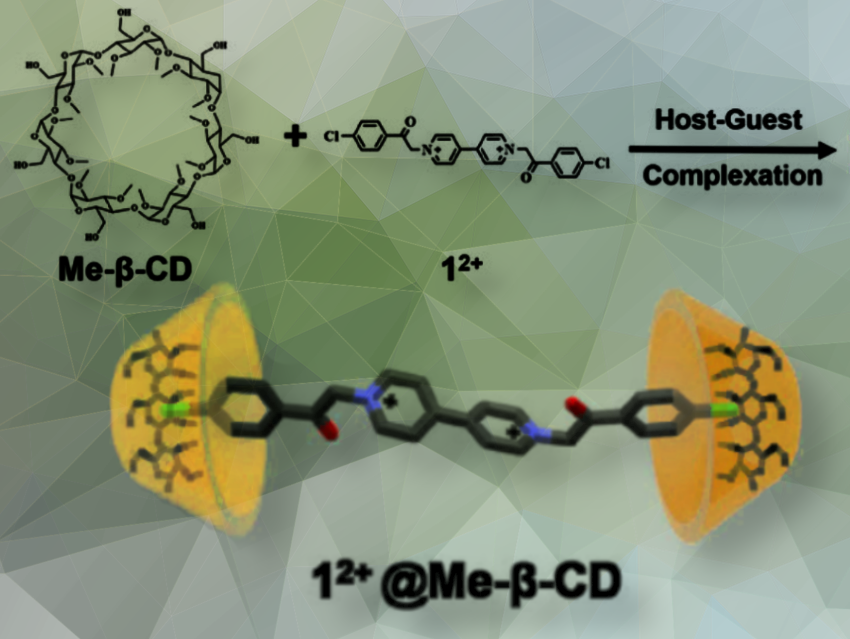Viologens are organic compounds with the formula (C₅H₄NR)₂ⁿ⁺. They produce violet color on reduction [violet + Latin gen = generator of]. Viologens, as strong electron acceptors, generate free radicals during electron transfer when stimulated by light, heat, electricity, and chemical reagents. They are widely used in displays, sensors, and information security. However, due to strong π···π stacking of fluorophores causing aggregation-caused quenching (ACQ), viologens have poor fluorescence emissions, limiting their applications. A recent macrocycle strategy efficiently enhances single viologen molecule (SVM) emissions, improving fluorescence and chromism.
Yue-Ling Bai, Jiaqiang Xu, and colleagues, Shanghai University, China, have designed a viologen derivative (12+·2Cl) and created a viologen-based host-guest supramolecule (12+@Me-β-CD) by encapsulating 12+ into methyl-β-cyclodextrin. This supramolecule shows photo/thermal/chemical-induced triple stimulus chromism and emits solid-liquid dual-state fluorescence, which can be dynamically regulated by the chromism process.
The designed 12+ is sensitive to light and acid/base, generating radicals through intra/intermolecular electron transfer (ET). The 12+@Me-β-CD supramolecule maintains sensitive and reversible photo- and chemochromism and shows thermal-responsive purple color due to intermolecular ET between 12+ and Me-β-CD.
Furthermore, 12+@Me-β-CD shows remarkable fluorescence enhancement in solid-liquid dual states compared to 12+, with intensity reversibly and dynamically modulated by color changes. These results provide a pathway for developing integrated multi-responsive chromic and dynamic fluorescence materials, with potential applications in information security and smart windows.
- Viologen-Based Host-guest Supramolecule with Tunable Intramolecular/Intermolecular Electron Transfer Chromism and Dynamic Fluorescence,
Zhiang Bai, Haotian Zhang, Rui Xue, Xilong Lu, Xuyi Li, Walker MacSwain, Weiwei Zheng, Jiaqiang Xu, Yang Yu, and Yue-Ling Bai,
Aggregate 2024.
https://doi.org/10.1002/agt2.583




